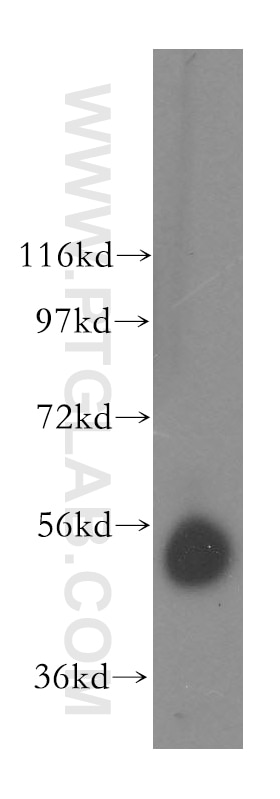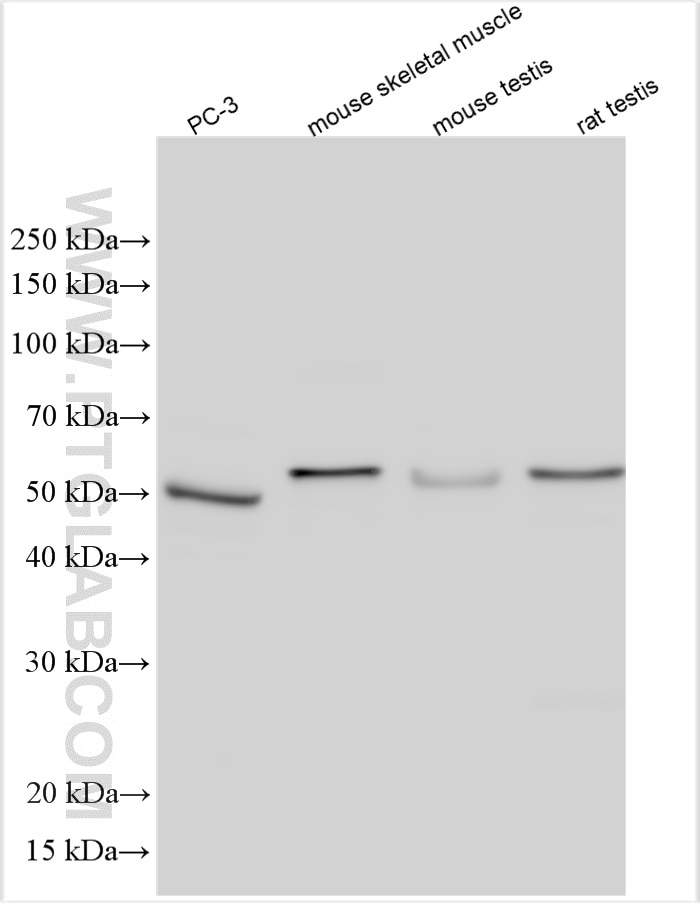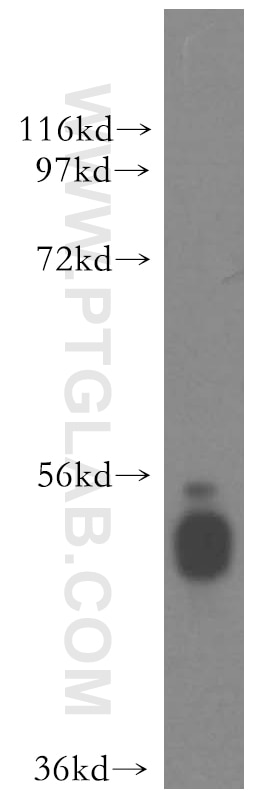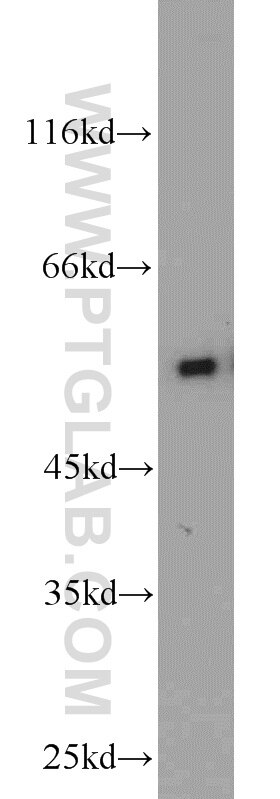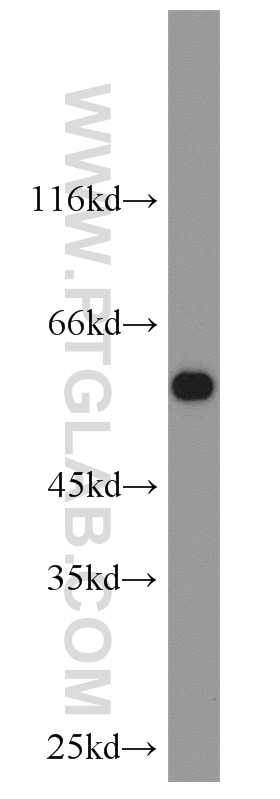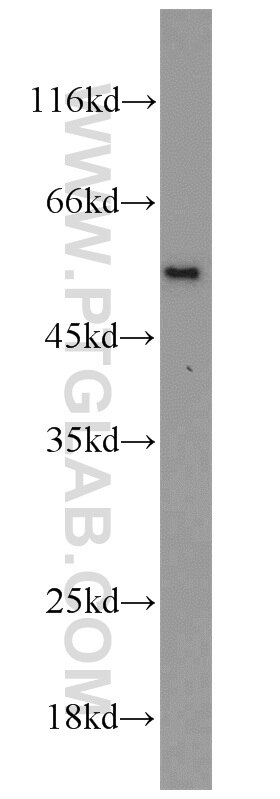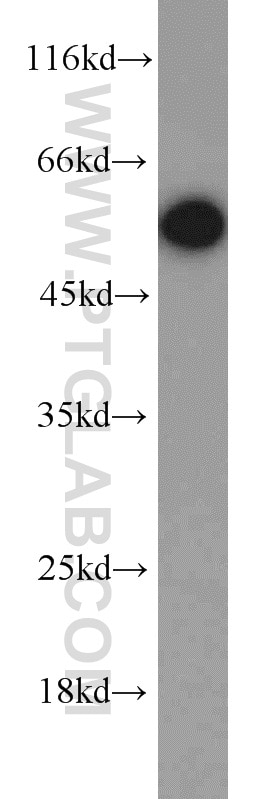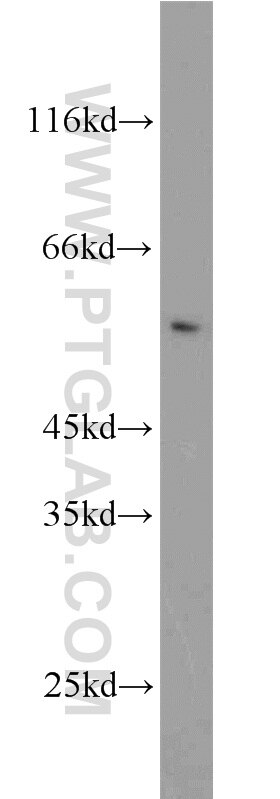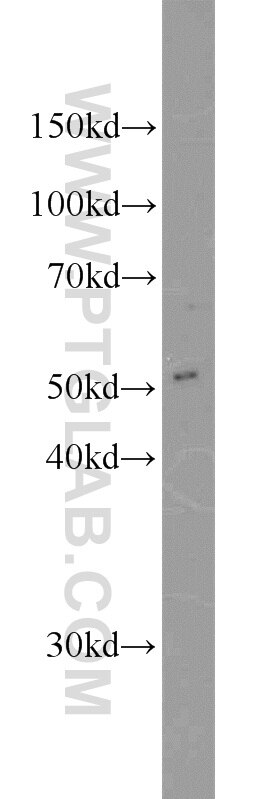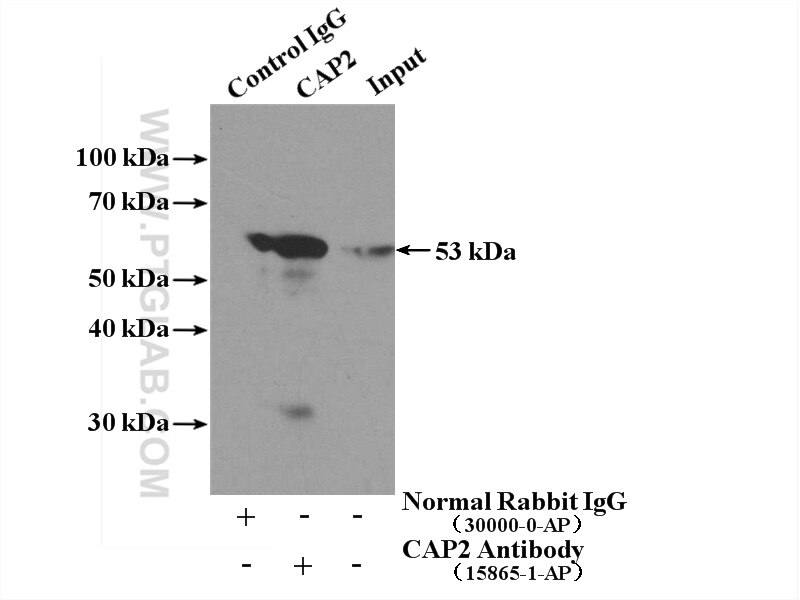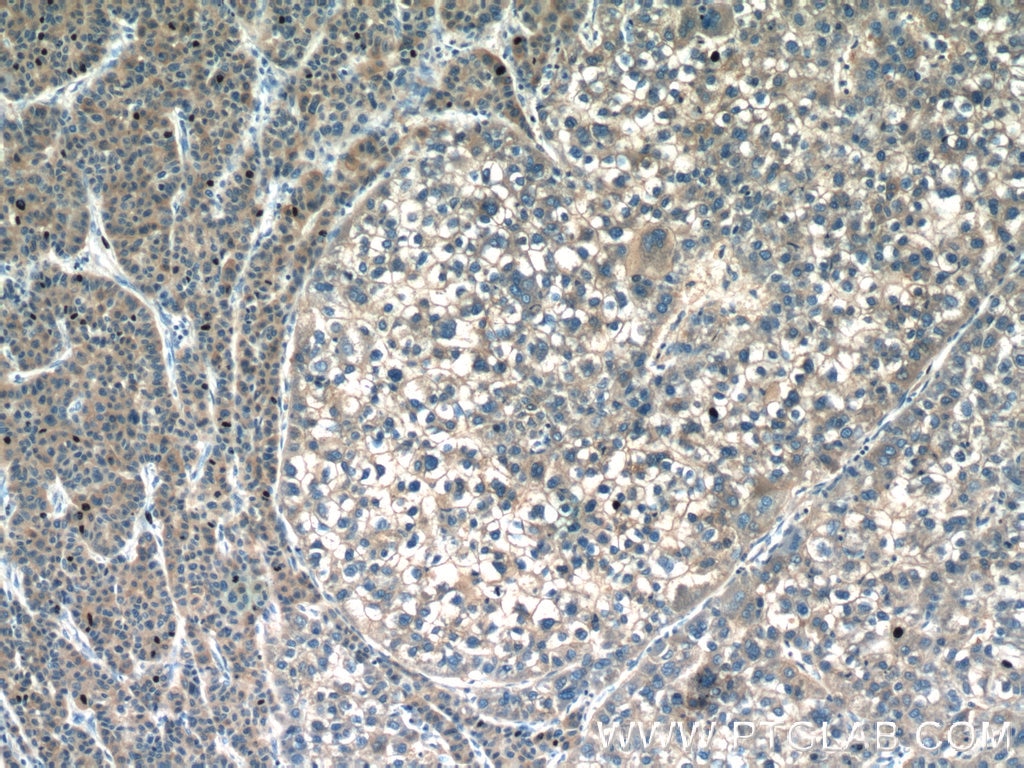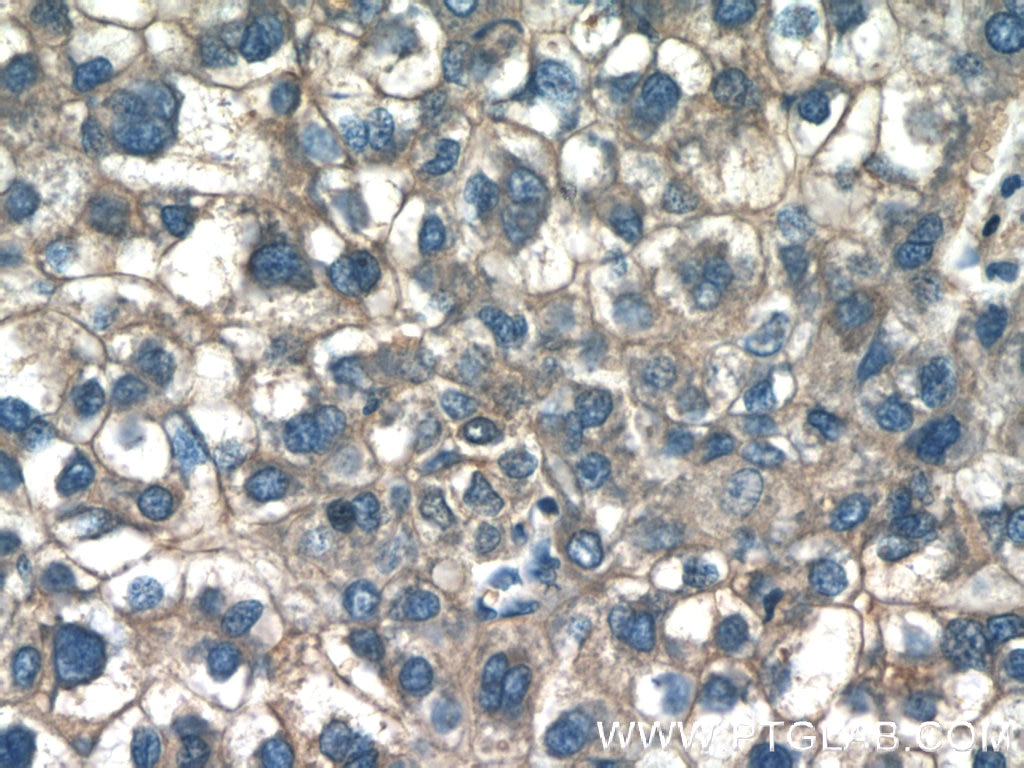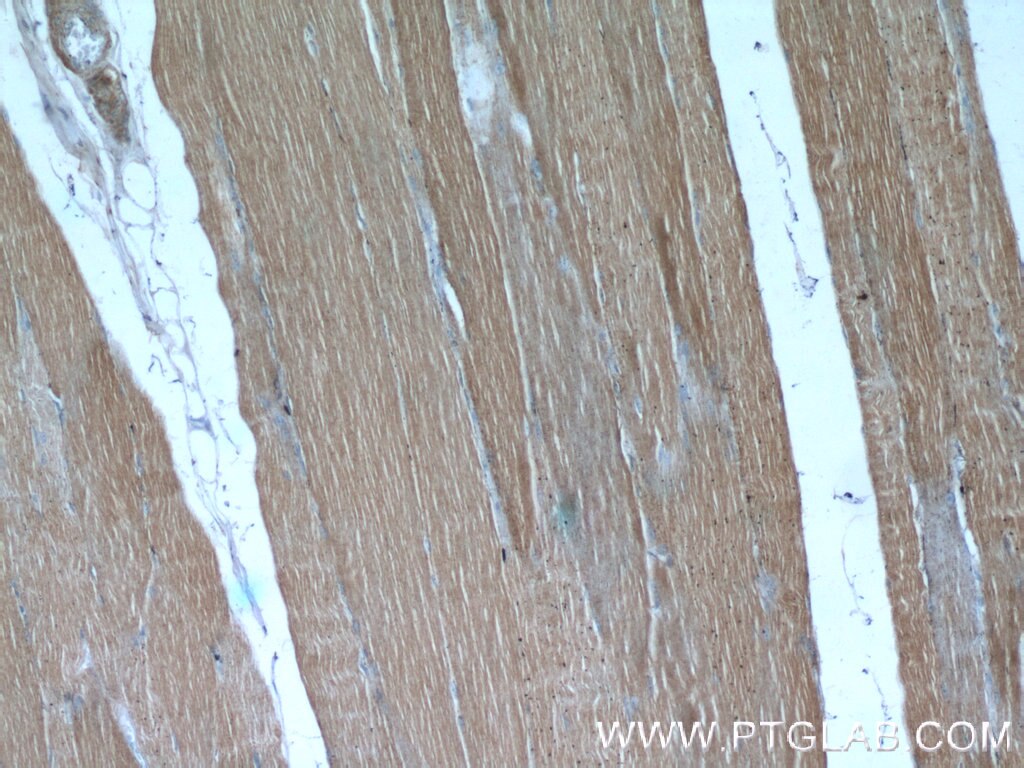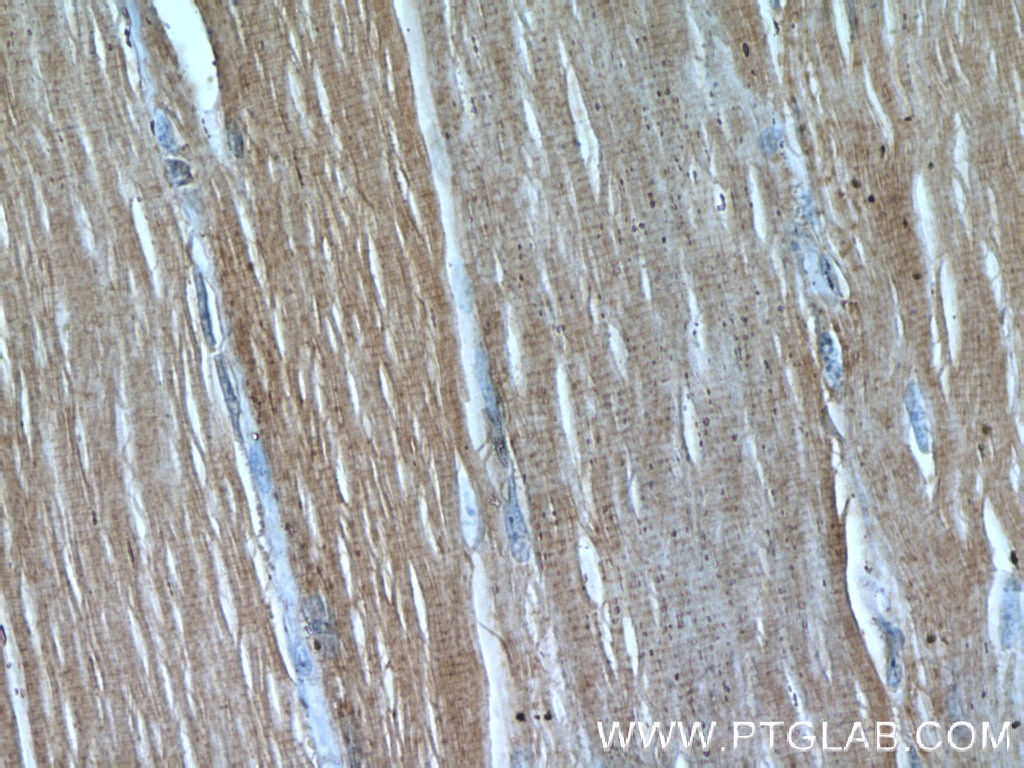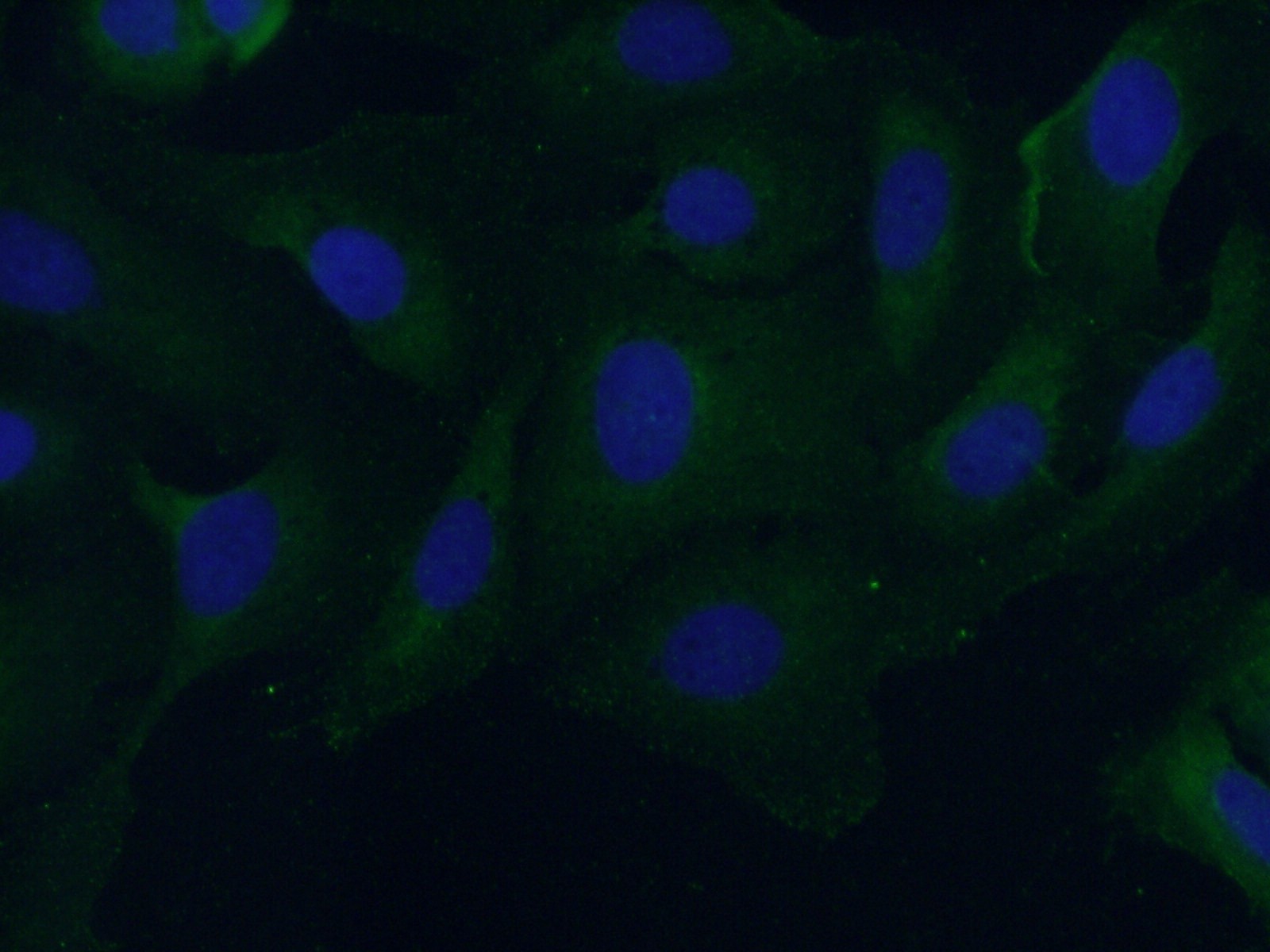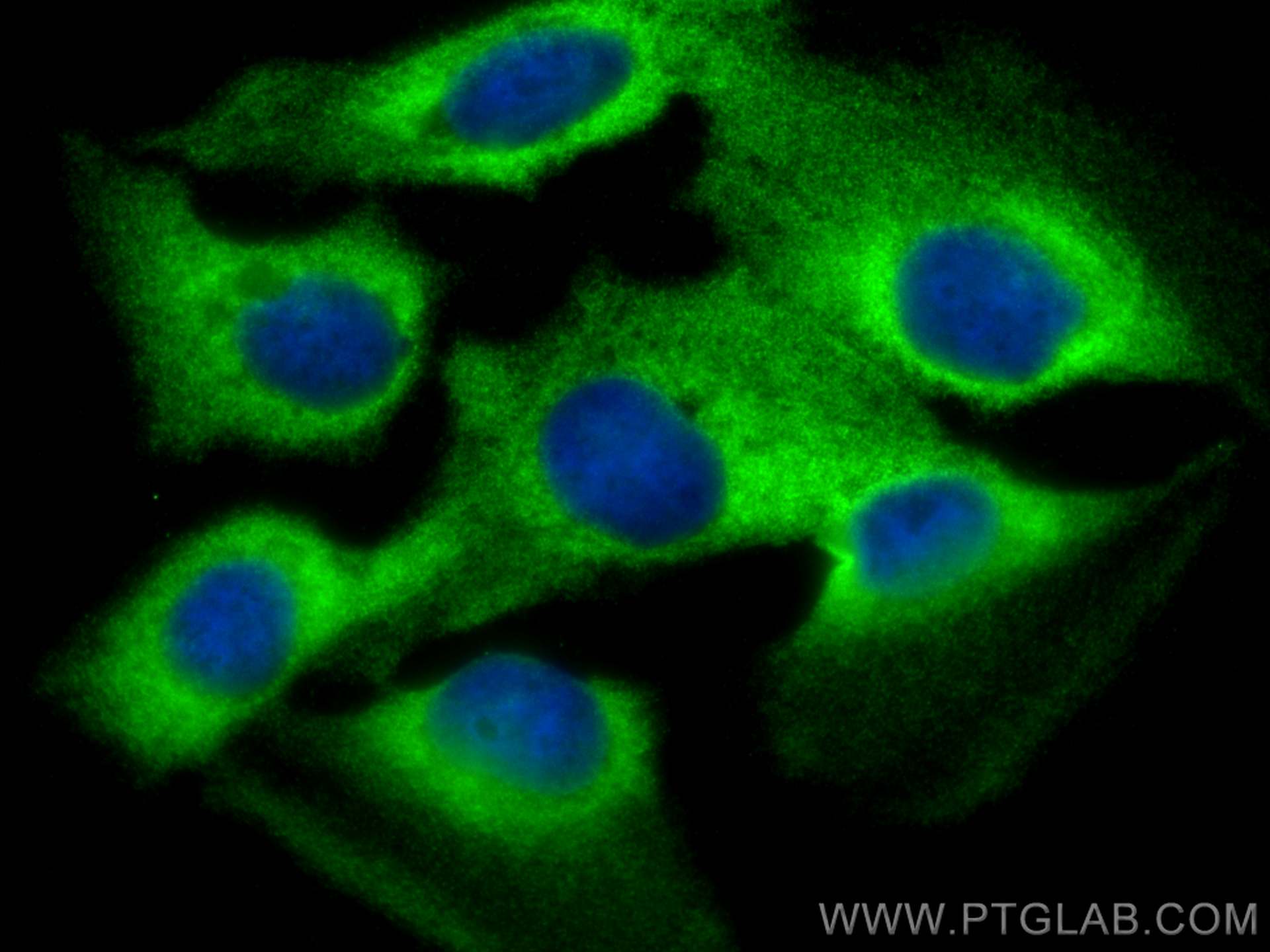- Featured Product
- KD/KO Validated
CAP2 Polyklonaler Antikörper
CAP2 Polyklonal Antikörper für WB, IHC, IF/ICC, IP, ELISA
Wirt / Isotyp
Kaninchen / IgG
Getestete Reaktivität
human, Maus, Ratte
Anwendung
WB, IHC, IF/ICC, IP, CoIP, ELISA
Konjugation
Unkonjugiert
Kat-Nr. : 15865-1-AP
Synonyme
Geprüfte Anwendungen
| Erfolgreiche Detektion in WB | PC-3-Zellen, HepG2-Zellen, humanes Nierengewebe, Mausherzgewebe, Mausnierengewebe, Maus-Skelettmuskelgewebe, Maushodengewebe, Rattenhodengewebe |
| Erfolgreiche IP | Maushodengewebe |
| Erfolgreiche Detektion in IHC | humanes Leberkarzinomgewebe, humanes Skelettmuskelgewebe Hinweis: Antigendemaskierung mit TE-Puffer pH 9,0 empfohlen. (*) Wahlweise kann die Antigendemaskierung auch mit Citratpuffer pH 6,0 erfolgen. |
| Erfolgreiche Detektion in IF/ICC | U2OS-Zellen |
Empfohlene Verdünnung
| Anwendung | Verdünnung |
|---|---|
| Western Blot (WB) | WB : 1:1000-1:6000 |
| Immunpräzipitation (IP) | IP : 0.5-4.0 ug for 1.0-3.0 mg of total protein lysate |
| Immunhistochemie (IHC) | IHC : 1:20-1:200 |
| Immunfluoreszenz (IF)/ICC | IF/ICC : 1:50-1:500 |
| It is recommended that this reagent should be titrated in each testing system to obtain optimal results. | |
| Sample-dependent, check data in validation data gallery | |
Veröffentlichte Anwendungen
| KD/KO | See 3 publications below |
| WB | See 6 publications below |
| IHC | See 1 publications below |
| IF | See 3 publications below |
| CoIP | See 1 publications below |
Produktinformation
15865-1-AP bindet in WB, IHC, IF/ICC, IP, CoIP, ELISA CAP2 und zeigt Reaktivität mit human, Maus, Ratten
| Getestete Reaktivität | human, Maus, Ratte |
| In Publikationen genannte Reaktivität | human, Maus, Ratte |
| Wirt / Isotyp | Kaninchen / IgG |
| Klonalität | Polyklonal |
| Typ | Antikörper |
| Immunogen | CAP2 fusion protein Ag8477 |
| Vollständiger Name | CAP, adenylate cyclase-associated protein, 2 (yeast) |
| Berechnetes Molekulargewicht | 477 aa, 53 kDa |
| Beobachtetes Molekulargewicht | 53 kDa |
| GenBank-Zugangsnummer | BC008481 |
| Gene symbol | CAP2 |
| Gene ID (NCBI) | 10486 |
| Konjugation | Unkonjugiert |
| Form | Liquid |
| Reinigungsmethode | Antigen-Affinitätsreinigung |
| Lagerungspuffer | PBS with 0.02% sodium azide and 50% glycerol |
| Lagerungsbedingungen | Bei -20°C lagern. Nach dem Versand ein Jahr lang stabil Aliquotieren ist bei -20oC Lagerung nicht notwendig. 20ul Größen enthalten 0,1% BSA. |
Hintergrundinformationen
CAPs (CAP1 and CAP2) are evolutionarily conserved proteins with roles in regulating the actin cytoskeleton and in signal transduction. CAP2 is predominantly expressed in brain, heart and skeletal muscle, and skin. It is found in the nucleus in undifferentiated myoblasts and at the M-line of differentiated myotubes. Overexpression of CAP2 has been reported in many cancers, including hepatocellular carcinoma (HCC), human breast cancer, and malignant melanoma.
Protokolle
| PRODUKTSPEZIFISCHE PROTOKOLLE | |
|---|---|
| WB protocol for CAP2 antibody 15865-1-AP | Protokoll herunterladen |
| IHC protocol for CAP2 antibody 15865-1-AP | Protokoll herunterladenl |
| IF protocol for CAP2 antibody 15865-1-AP | Protokoll herunterladen |
| IP protocol for CAP2 antibody 15865-1-AP | Protokoll herunterladen |
| STANDARD-PROTOKOLLE | |
|---|---|
| Klicken Sie hier, um unsere Standardprotokolle anzuzeigen |
Publikationen
| Species | Application | Title |
|---|---|---|
J Clin Invest CAP2 promotes gastric cancer metastasis by mediating the interaction between tumor cells and tumor-associated macrophages
| ||
Int J Mol Sci Analysis of mRNA and Protein Levels of CAP2, DLG1 and ADAM10 Genes in Post-Mortem Brain of Schizophrenia, Parkinson's and Alzheimer's Disease Patients. | ||
Commun Biol CAP2 is a regulator of actin pointed end dynamics and myofibrillogenesis in cardiac muscle.
| ||
Sci Rep Cyclase-associated protein 2 (CAP2) controls MRTF-A localization and SRF activity in mouse embryonic fibroblasts. | ||
Oncol Rep Expression status of cyclase‑associated protein 2 as a prognostic marker for human breast cancer. | ||
Sci Signal The actin-binding protein CAP1 represses MRTF-SRF-dependent gene expression in mouse cerebral cortex |
Rezensionen
The reviews below have been submitted by verified Proteintech customers who received an incentive for providing their feedback.
FH Anil K (Verified Customer) (06-10-2022) | Saw a single band in the mice brain lysates
|
